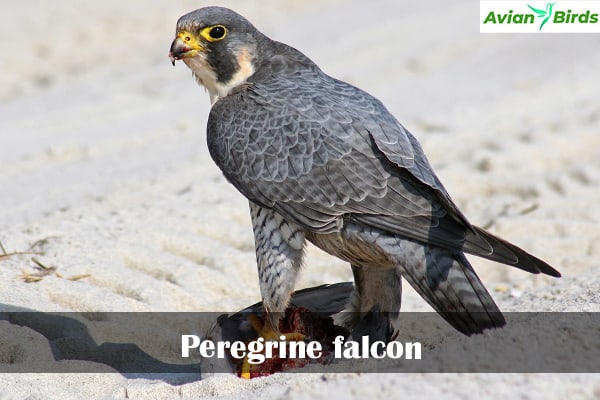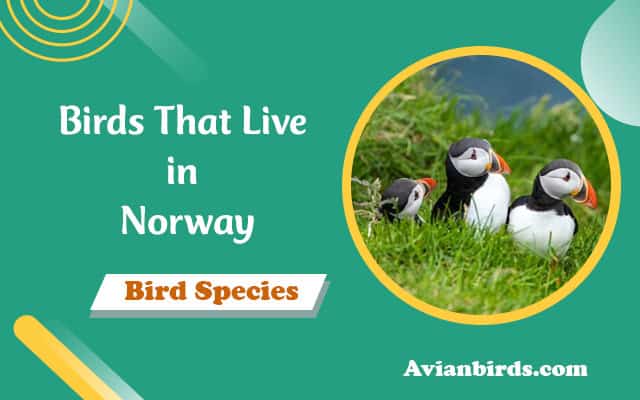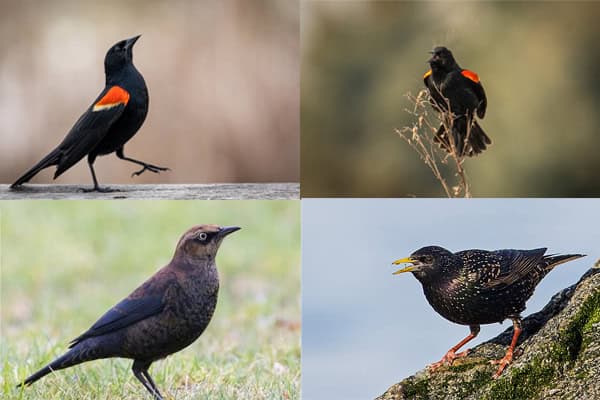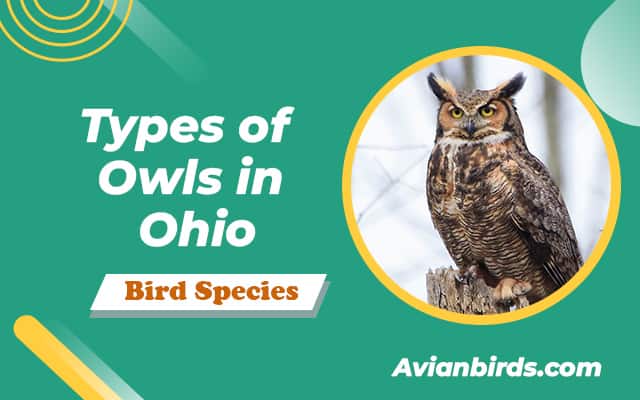3 Falcons in North Carolina (ID Guide With Pictures)
In North Carolina, falcons are amazing birds that fly super fast. They have skinny wings that help them chase after food quickly. The Peregrine Falcon is the fastest of them all, zooming through the air at 300 km/h (186 mph) – that’s faster than a race car!
North Carolina is a special place where these birds live. It has all sorts of areas like cities, swamps, and farms where falcons can be found. There are even three different kinds of falcons here. I’ve put together a guide to show you these cool falcons and tell you some neat things about them. It’s like a story about how tough and awesome these birds are as they fly around in the sky.
Here we’ll learn about 3 different types of Falcons in North Carolina
1. Peregrine Falcon
- Scientific name: Falco peregrinus
- Length: 34-58 cm
- Weight: Males: 330-1000 g, Larger females: 700-1500 g
- Wingspan: 74-120 cm
- Lifespan: 8-15 years
- Status: Least Concern
The Peregrine Falcon, or just “Peregrine,” is a cool bird that’s really fast and agile. People love to watch it because it can do amazing tricks in the air.
These falcons like to hunt when it’s not too bright outside, like at dawn or dusk. In cities, where it’s lighter at night, they can even hunt in the dark because they see really well.
Farmers like having Peregrines around because they eat lots of mice and other small animals that cause trouble on farms.
Even though Peregrines are only as big as a crow, they’re strong hunters. They usually eat birds that are not too big, but sometimes they catch bigger animals, even other falcons!
Peregrines are also popular in falconry, which is when people keep them for hunting. They’re often raised from babies and then let go into the wild when they’re grown up.
Some people think falconry is good for Peregrines. A lot of young birds don’t make it in the wild, so learning to hunt with a human might help them survive better when they’re on their own.
2. American Kestrel
- Scientific name: Falco sparverius
- Length: 22 to 31 cm
- Weight: Larger female: 86-165 g, Smaller males: 80-143 g
- Wingspan: 51–61 cm
- Lifespan: 5-10 years
- Status: Least Concern
The American Kestrel is North America’s tiniest falcon but don’t let its size fool you – it’s mighty.
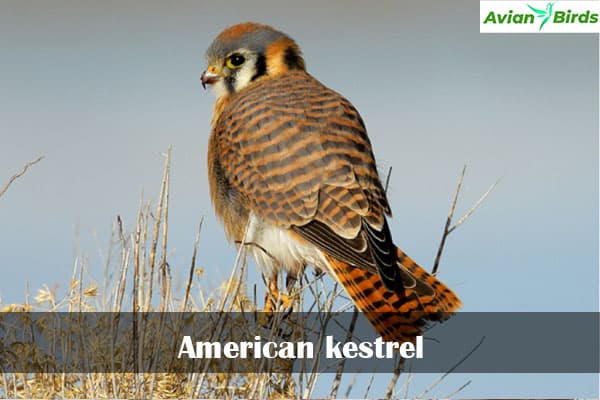
These birds love open spaces but can live almost anywhere. The females aren’t as bright as the males but are bigger. They have pretty red feathers and a blue-gray head.
They hunt by waiting quietly and then surprise their prey. Even though they’re only as big as a Blue Jay, they’re tough hunters.
They eat lots of different things, like insects and mice, and are known as “sparrowhawks” in the South because they also catch small birds.
You can spot these Kestrels by the two black spots on their heads, which look like extra eyes to scare off bigger birds like the Peregrine Falcon.
3. Merlin
- Scientific name: Falco columbarius
- Length: 24–33 cm
- Weight: 165 -300 g
- Wingspan: 18.2–23.8 cm
- Lifespan: 7-12 years
- Status: Least Concern
The Merlin Falcons in North Carolina, a small but mighty falcon, is known for its intelligence and is a favorite in falconry. It used to be called the pigeon hawk, but it eats a variety of prey, from birds to amphibians, and is surprisingly light.

These birds can cause quite a stir; other birds may get stressed just by seeing a Merlin nearby. They usually stick with one partner during the breeding season, but sometimes they’ll pair up again.
Merlin nests are cozy, with 4-5 eggs. The young ones rely on their parents for about a month after leaving the nest, but sadly, many don’t make it through their first year. When food is scarce, only a few survive to adulthood.
Right now, Merlins aren’t in immediate danger of extinction, but their numbers are dropping. They’re facing challenges like climate change, losing their homes, and harmful chemicals from pest control.
Where are to Spot Falcons in North Carolina’s
To spot falcons, blend into their world. Get good binoculars—no need for pricey ones, check thrift stores or borrow from libraries. Explore North Carolina’s parks; they’re wildlife havens with guides to help you know what to look for.
Join local Audubon tours for expert tips, especially if you’re after city-dwelling falcons.
To invite falcons over, skip the rodenticides; they harm more than pests. Create a falcon-friendly zone with brush piles and native plants.
Let grasses grow; they attract falcon food. Keep cats indoors—they’re a threat to young falcons and other birds. Try setting up a natural shelter with old trees and water sources.
Falcons might not use nest boxes, but they appreciate natural hideouts. Remember, making your space welcoming to falcons means embracing the wild just a bit.
Check Our Previous Articles:
Final Thoughts:
North Carolina’s wilds are a haven for nature buffs, boasting habitats that nurture not just falcons but also the rare Red Wolf and Bog Turtle. Spotting these creatures is a treat for any wildlife enthusiast.
Falcons, the stealthy hunters, often merge seamlessly with their surroundings, making them a rare sight. But, if you learn to recognize their distinctive traits and preferred habitats, you might just spot one on a casual drive.
Also, These birds play a key role in maintaining the ecological balance. Furthermore, They control pests like mice and rats, which can be harmful to homes, and help keep other animal populations in check.
Supporting falcon conservation is vital. Plus, It not only protects these spirited birds but also promotes a balanced and thriving ecosystem for all species in North Carolina.


